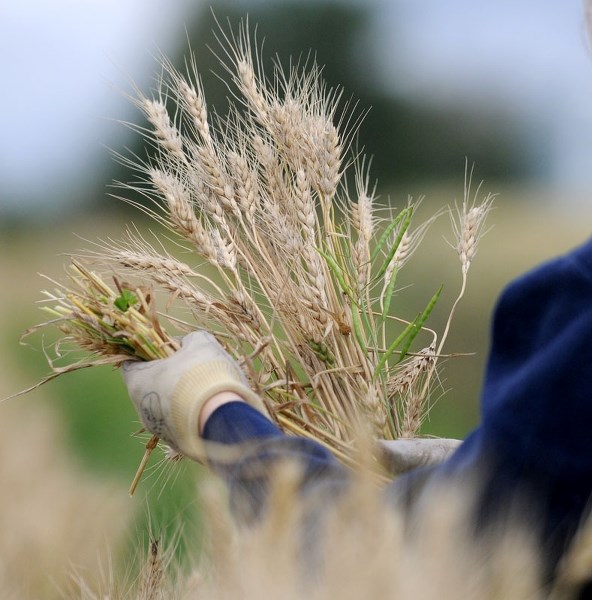Sturgeon County farmers have started seeding weeks early this year thanks to some exceptionally warm weather.
While May 1 is traditionally the start of spring seeding in Sturgeon County, an unusually warm and dry April has let some farmers get a head start on planting this year's crop.
Environment Canada reports that temperatures at the Edmonton Garrison station were well above zero for almost all of April and a fair chunk of March, hitting 22.3 C last April 22.
March and April temperatures in this region are at a one in six- to 12-year high so far, said Alberta Agriculture soil moisture analyst Ralph Wright.
Bon Accord-area farmer Murray Mulligan said he started planting fava beans back on April 22, and knew of another farmer who had been seeding since the 13th.
"That's pretty early," he said, noting that the earliest he'd normally start was the 25th.
Mulligan guessed that 20 to 30 per cent of the farmers in his area had started seeding crops as of this week, and said that most weren't going full speed yet. He credits April's warm spurt for the early start.
"We kind of go by the poplar trees budding out."
This will be the week when most farmers really get rolling with seeding, said André Montpetit, manager of Sturgeon Valley Fertilizer. He's doubled his staff and stockpiled tonnes of seed and fertilizer as a result.
St. Albert-area farmer Robert Tappauf said he was going full-tilt planting wheat, canola, oats and malt barley as of Monday, and expected to keep at it for 18 hours a day for the next 25 days before he was done.
Statistics Canada's most recent field crops report suggests that Albertans will plant about 6.6 per cent more spring wheat this year than they did the last (about 6.4 million acres total) and about 7.7 per cent less canola (about six million acres total).
Montpetit said his sales of canola seed have been relatively flat in recent years – the plant is still a major crop in the county, but the presence of the canola-killing disease clubroot puts a lid on its expansion. Wheat is also still pretty dominant.
"The crop that's been taking acres from them is fava beans and peas," he said – fava beans have probably doubled in acreage here this year from last.
Farmers are simply "desperate" to find a new cash crop other than wheat and canola, Montpetit said. He hoped that beans would catch on and become part of most farmers' crop rotations.
Drought?
High winds and dry weather mean most farmers are seeding into hard, dry dirt right now, Tappauf said. There's enough moisture for the seeds to germinate, but not enough for them to grow.
"It is worrying that it could possibly be a drought year."
Wright said most of the county is at a six- to 12-year low right now when it comes to soil moisture reserves due to a dry fall, early snowmelt and a warm April. Those facts, combined with the fact that April and early May are usually pretty dry here, may give people the impression that we're in for a drought.
But while Environment Canada has said there's a 60 to 70 per cent chance that the next four months will be hotter than average, it has forecast even odds when it comes to whether they will have more, less, or about average amounts of precipitation, Wright noted.
The end of May will pretty much set the stage for the rest of the season, as that's when we usually get our big dumps of rain, Wright said. Alberta's weather is also very unpredictable at this time of year, he added.
"We have less capacity now to resist drought at the moment. That can change in a heartbeat."
Visit Alberta Agriculture's website for the latest agricultural moisture reports.




